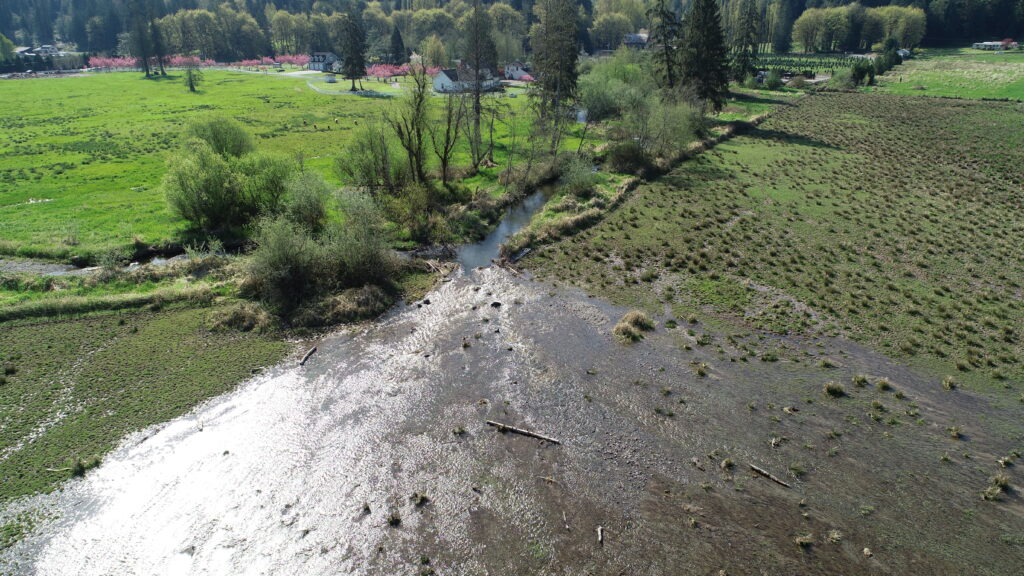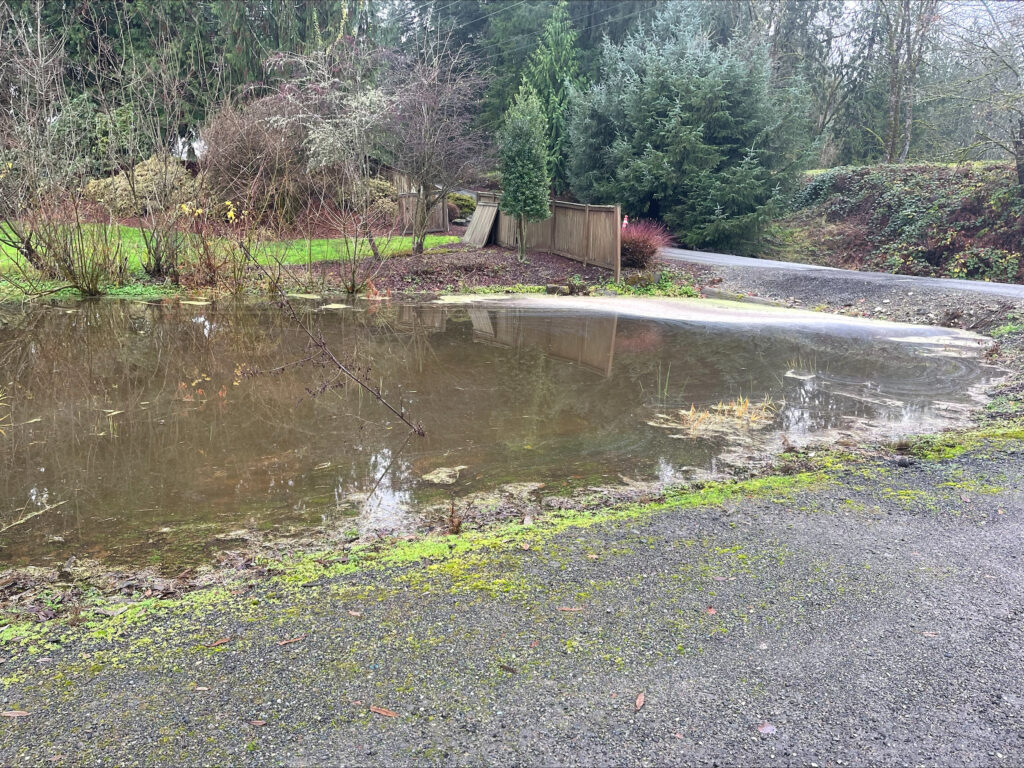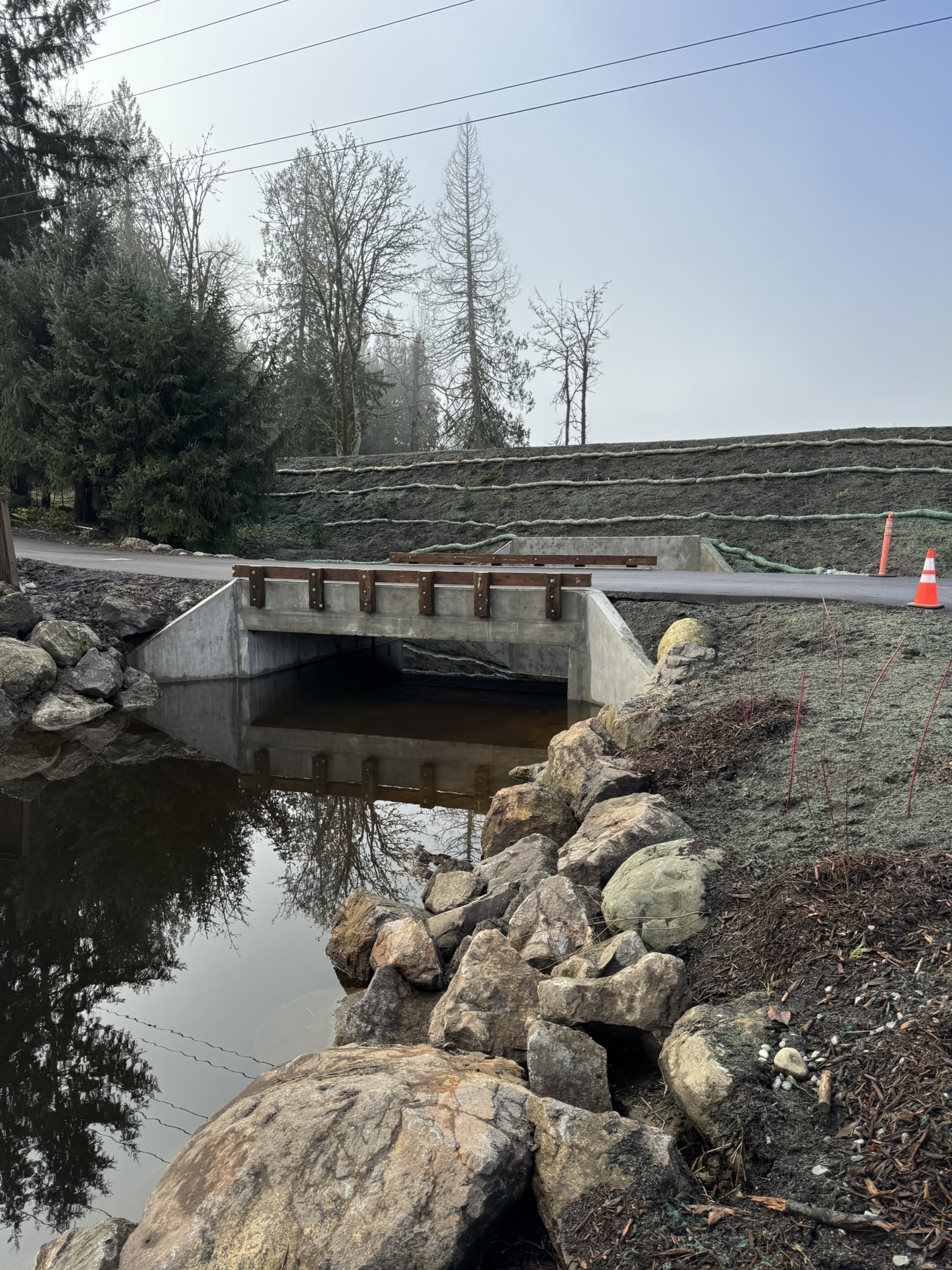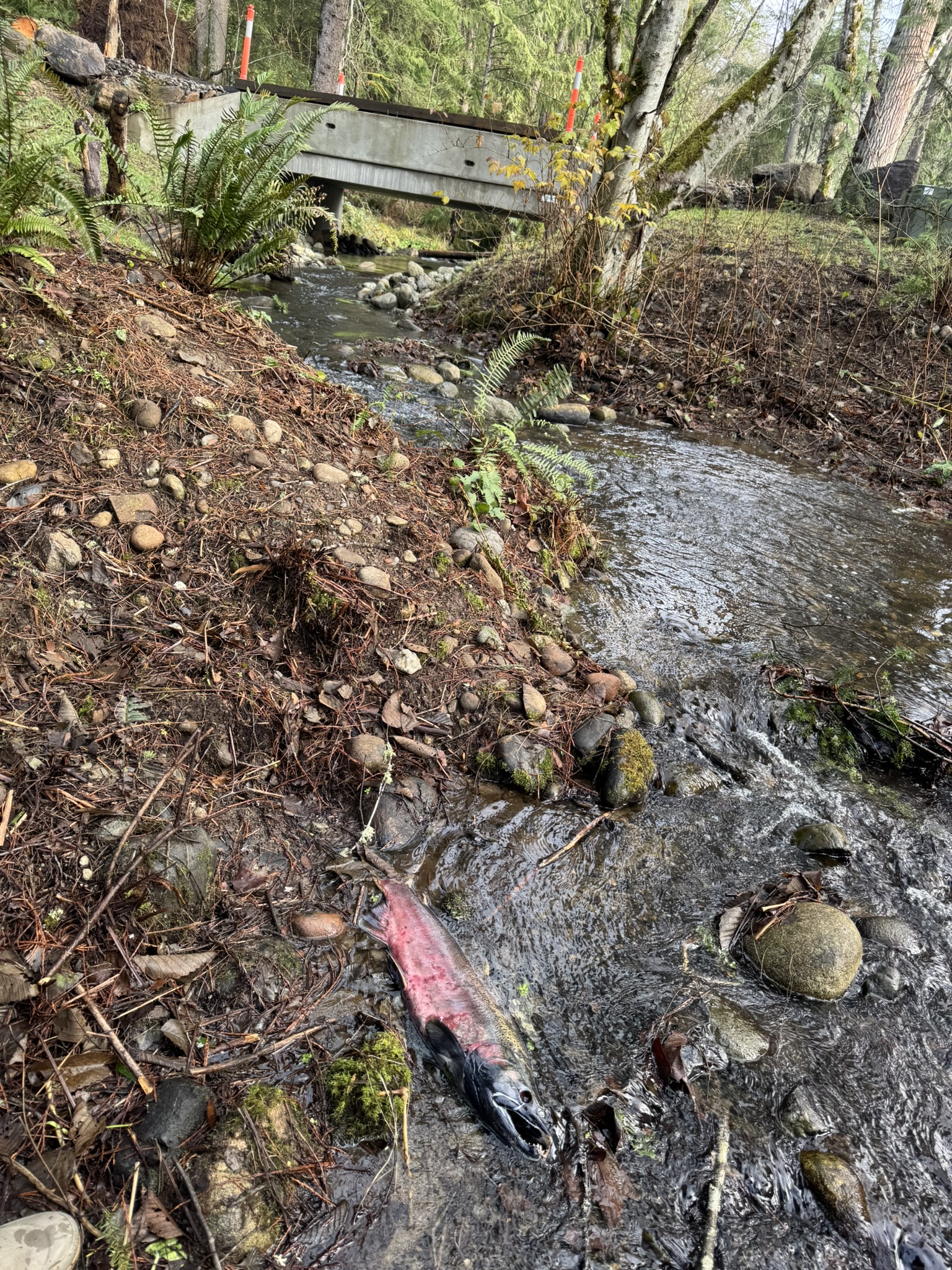Project Updates
Langlois Creek Culvert Replacements (Downstream Crossings) – As of November 2024, construction to replace the furthest two downstream fish barrier culverts on Langlois Creek has been completed. This project was the last piece of a larger project to replace a total of four barrier culverts on this creek that were causing drainage issues and blocking upstream habitat for salmon. The two upstream crossings were replaced in 2022. This project restored access to several miles up upstream spawning and rearing habitat for coho salmon, improved instream and riparian habitat, and improved agricultural production by protecting surrounding agricultural soils in Basin 56. Funding was provided by the Brian Abbott Fish Barrier Removal Board, the King County Flood Control District, and King County Parks.
Tuck Creek Barrier Replacements – Funding secured from the King County Flood Control District to complete preliminary designs for the removal and replacement of existing farm access road crossings on Tuck Creek. Project goals include improving farm drainage, reducing flood risks, and restoring access to upstream habitat for Chinook salmon and steelhead, in Basin 9. Next steps include advancing this project through final designs and permitting. Construction TBD – estimated 2026.

Existing conditions within project area on Tuck Creek
Basin 10 Daylighting and Barrier Replacement – Funding secured from the King County Flood Control District to complete preliminary designs for the removal and replacement of one farm access road crossing, a failing 585-foot outlet pipe on an unnamed tributary to the Snoqualmie River. This project will remove the failing outlet pipe where two large sink holes have formed and replace it with a structure that will maintain flood protections for agricultural lands in Basin 10 and improve fish passage. Next steps include advancing this project through final designs and permitting. Construction TBD – estimated 2026.

Existing condition of outlet pipe to the Snoqualmie River
Ames Creek Alluvial Fan Alternatives Analysis – Funding secured from the King County Flood Control District to complete an alternatives analysis to identify actions to address alluvial fan impacts from an unnamed tributary to Ames Creek on surrounding agricultural lands. The analysis involves coordination with King County where the project intersects with West Snoqualmie Valley Rd. NE and NE 80th Street. Project goals include improving flood safety for agricultural landowners and for agricultural transportation roads, and potentially restoring fish passage for salmon in Basin 29. Construction TBD – estimated 2027.

Impacts of alluvial fan processes following flooding within project area
Projects Advancing to Next Phases
Cherry Creek (Phase II) – Funding has been secured from the King County Flood Control District to advance this project through permitting. This project is the long-term solution to the 2018 avulsion that occurred on Cherry Creek, which caused significant impacts to the surrounding 300 acres of agricultural lands and stranded thousands of salmon. Project goals include restoring floodplain functions, improving the surrounding habitat, and establishing agricultural flood protections in Basin 4. Construction TBD – 2025 or 2026.

2018 avulsion on Cherry Creek
Langlois Creek Culvert Replacements (Downstream Crossings) – Funding has been secured from the Brian Abbott Fish Barrier Removal Board, the King County Flood Control District, and King County Parks for construction to replace the furthest two downstream fish barrier culverts on Langlois Creek. This project is the last piece of a larger project to replace a total of four barrier culverts on this system that were causing drainage issues and blocking upstream habitat for salmon. The two upstream crossings were replaced in 2022. Project goals include restoring access to several miles up upstream spawning and rearing habitat for coho salmon, improving instream and riparian habitat, and improving agricultural production by protecting surrounding agricultural soils in Basin 56. Construction summer 2024.

Existing conditions within the project area on Langlois Creek following flooding
Basin 1 Pump Replacement – Funding secured from King County Stormwater Services to replace an outdated and under-functioning circa 1930’s pump station on an unnamed tributary to the Snoqualmie River. Final designs are near completion. The primary project goal is to maintain agricultural soil quality prior to and during the growing season. The proposed project includes increasing the capacity and efficiency of the pumping system to address increasing stormwater runoff into the basin related to climate change impacts, while reducing impacts to fish passage in Basin 1. Construction TBD.

Existing pump house needing replacement
Completed Projects
Langlois Creek Culvert Replacements (Upstream Crossings) – Funding provided by the King County Flood Control District, NRCS, and the King Conservation District to replace the upstream two crossings and barrier log weir on Langlois Creek in 2022. This was the earlier phase of the project to replace four barrier culverts on this system.

Completed barrier culvert replacement
Cherry Creek (Phase I) – Funding provided by the King County Flood Control District to address year-round chronic flooding impacts and fish strandings caused by a 2018 avulsion in 2020. This was the earlier short-term solution to alleviate the impacts to agricultural lands and fish until Phase II could be designed and permitted. Phase I included repairing the breach in the channel, restoring fish passage to salmon, increasing upstream channel capacity, and enhancing and restoring habitat with instream large wood and native plantings.

Repair of the 2018 avulsion site



